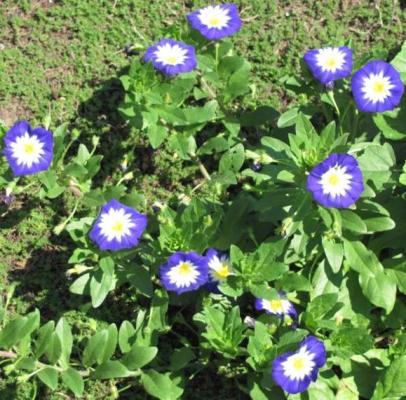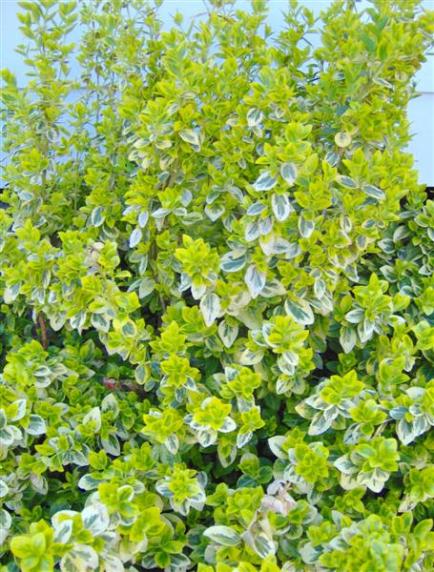Convolvulus tricolor (syn. C. minor), is a species of morning glory known by the common name Dwarf Morning Glory. 容易種植,低矮需全日照,用種子繁殖
Archive | 三月 2012
螳螂 Praying Mantis (for natural insect control) 生物防治法
園藝店裡有賣這種螳螂泡巢,不便宜(@CDN$16.99+HST)可是很有效! 不但控制一般害蟲也使得蛞蝓和蚊蠅明顯減少,不需噴藥卻可以高枕無憂再不怕玫瑰被蹂躪了,真好! 用了好用也介紹給鄰居和客戶使用—大家也說好讚又環保.
圖示為中國大螳螂Chinese mantid (Tenodera aridifolia) 於1896被引進用於控制蟲害, 加拿大另有兩種螳螂: 一為在1899不小心引進北美的歐洲螳螂 European mantid (Mantis religiosa) 和另一種本土的北美地螳螂Ground mantid (Litaneutria minor) 資料來源如下網站連結
Here is an article from http://www.thecanadianencyclopedia.com/articles/mantid
—-Three species of mantids are recorded in Canada. The praying mantid (Mantis religiosa) was introduced accidentally from Europe to New York, US, in 1899 and subsequently spread to southern Ontario and Quebec. It was later introduced to the Okanagan Valley, BC, to control grasshoppers. The eggs are laid in a frothy substance that hardens into a case and glues the eggs to a twig, fence post or other support. The eggs overwinter and hatch in the spring; adults appear in the late summer.
The Chinese mantid (Tenodera aridifolia) was introduced to eastern North America from China in 1896 to control INSECT PESTS. The ground mantid, (Litaneutria minor) ranges from Mexico north to BC, and is the only native Canadian mantid. In Canada it is known only from the dry grasslands of the southern Okanagan Valley. The males are winged; females are flightless but are agile runners.
常春衛矛 Euonymus(Euonymus
Banana Bread–好吃的香蕉麵包來了!
Banana Bread 香蕉麵包
2 Cups All-purpose Flour (2杯中筋麵粉)
1 Cup Brown Sugar (1杯紅糖)
1 Cup Plain Yorgurt (1杯原味優格)
1 Cup Mashed Banana (about 3) (1杯香蕉泥約3根的量)
1/3 Cup Vegetable Oil (1/3杯蔬菜油)
1 Large Egg (大蛋1枚)
1 Teaspoon Baking Soda (1小匙小蘇打粉)
1 Teaspoon Baking Powder (1小匙泡打粉)
Cooking Spray (防沾黏的噴霧油罐)
1. Pre-heat oven at 350 F. (預熱華氏350度)
2. Peel the banana and use a fork to mash them on a plate. (香蕉去皮後放在盤中用叉子壓成泥)
3. Measure and mix all ingredients in a large bowl. (把量好的材料置於大碗中混合均勻)
4. Spray the bread mold with cooking spray to prevent sticking on the mold. (將麵包模子內噴上油防黏)
5. Pour the batter into the mold, bake it for 1 hour or until the surface turns golden. (將混合好的材料倒入噴了油的麵包模子裡,烤1小時或烤到表面金黃即可關火,放涼後切片食用)
水仙 Daffodil (Narcissus)
風信子 Hyacinth(Hyacinthus orientalis)
牛眼菊/姬向日葵Ox-eye Daisy/False Sunflower (Heliopsis helianthoides)
離子莧 Lewisia(Lewisia)
苔狀虎耳草Mossy Saxifraga (Saxifraga)
苔狀虎耳草Mossy Saxifraga (Saxifraga)

苔狀虎耳草可以用種子,扦插或分株的方式來進行. 此圖為實生苗. Mossy Saxifraga can be propagated by seeds, cuttings or division. This is a image of the seedlings.
Very hardy, evergreen ground cover. Easy to grow in partial shade location in moist but well drained soil. Its mature size is:10-20cm (H) x 15-30cm (W). Excellent for rock or alpine garden. Blooming time from late spring to early summer. Flowers are good for cut flower and attract bees and butterflies. Easy to propagate by seeds, cuttings and dividing the plant clump in early spring. USDA Zones:4-9.
虎耳草屬,耐旱,似青苔低矮的植株,為常綠地被植物,有幾種不同的花色. 容易栽種,喜半日照,溼潤但排水良好的土壤. 適合種植在多岩石的花壇裡,耐旱. 花期春末到初夏. 花可做切花. 它的花也是吸引蜂蝶的蜜源. 容易用種子枝條扦插或分株來繁殖. 可盆植.



























